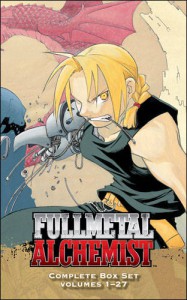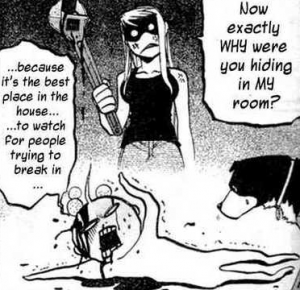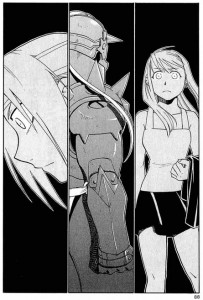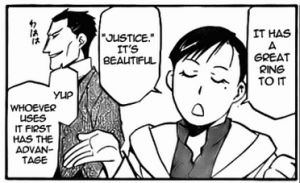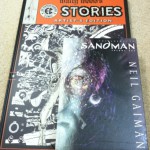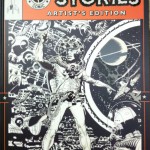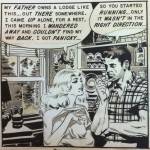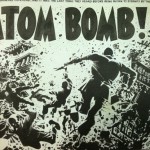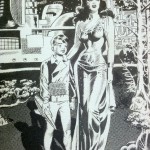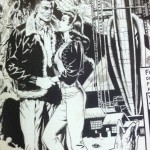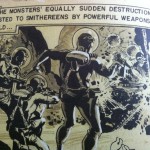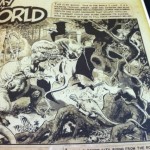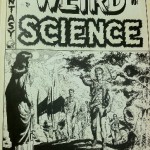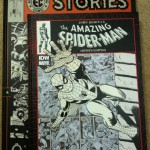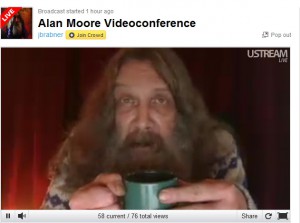Ok, this is it. Nine years – counting the time we knew of Christopher Nolan about to direct a movie called Batman: Intimidation Game, taking over from Darren Aronofsky’s I-just-snorted-four-lines-of-coke re-imagining of Bruce Wayne as an orphan working for a car mechanic named Big Al. No clue of what to expect from a director whose only credentials were a movie that played backwards and a remake of a Norwegian thriller.
Intimidation Game sounded like it meant business. Begins sounded like a Nintendo product – kid-friendly, whimsical and not at all Batman-y, if you get what I mean. Until you saw it. When did you see it? Do you remember at all? Before I saw it for real, at the IMAX theater in Hyderabad, I was there that first Friday, at Rex at Bangalore. I am fairly sure other people I came to know later that year saw it there too, and the comic-karma part of me – the one that gets goosebumps at the cheesiest references and storytelling loop-backs – sort of wonders if all of us roared at the screen in unison when Bruce Wayne stood up in the cave under his mansion, even as the agents of childhood dread swooped around him. That moment when the two-note leitmotif throbbed and soared through the speakers in the theater and you could not stop grinning like an idiot because good God, you never thought things would look this good, Christopher Nolan, you magnificent man.
Digression: If there has ever been a case of my wanting to go back in time and apologize to a creator, it would be to Hans Zimmer, whose theme for Batman Begins I dismissed as being ‘not memorable enough’. I thought his two note theme was pedestrian, that they could not stand up to the grandeur of Elfman’s Spider-Man, at that time my personal benchmark for memorable superhero scores. I was wrong. I was so, so wrong. Those two notes, coupled with the variations on the swirling sonic tapestries in the lower register – the rumbly whoosh of bat wings, and the slowly-building orchestral sweeps – showed me how less is more. Add the dissonant Joker variant of the same two notes in The Dark Knight, and the primal chants echoing throughout the third movie, and you have probably one of the finest examples of minimalism and compositional idiosyncrasy on display. And I won’t even get into the playfulness of the piano-based Catwoman theme. Deep breath. This soundtrack is destined to be on repeat in my playlist for quite some time.
And you should also go check out the official app. Yes, Zimmer has actually come up with an iPhone app for the soundtrack, where the music, on auto mode, shifts based on what you are doing. In-app purchases let you buy the complete music suite (far more than the 52-minute soundtrack release) for $4, and enhanced auto-modes (there is one that plays at night, and another at sunset). Your fingers brushing against the mic can create interesting Gotham-city effects in the music. It’s been a few hours since I downloaded the app, and I feel giddy with happiness.
End digression.
So, uh, you watched The Dark Knight Rises, right? And you hated it, or were underwhelmed, or loved the shit out of it. Does not matter, really. What matters is this:
For the first time in the history of this 73-year old character, we have a complete story, with beginning, middle and end. The life and times of Bruce Wayne as the singular vision of a creator (and his sidekicks, if you count Jonathan Nolan and David Goyer along with Nolan senior) No studio interference, no pandering to fans, no insulting the audience. With all respect to the likes of Frank Miller, Denny O’Neil/Neal Adams, Jeph Loeb/Tim Sale, Bill Finger/Jerry Robinson/Dick Sprang et al, you tried, gentlemen, and you got really close, but this man did it. He gave us a beginning, a middle and an end. He stole, borrowed from and was inspired by you, he built on your work in a different medium, took audacious decisions on his own, paid absolutely no attention to studio demands (the Riddler? Seriously?), did not throw us knowing winks and in-jokes (or as I call it, scraps and bones for the masses). These weren’t the comic-book movies that Marvel Studios churn out every summer, those disposable, interchangeable three-act popcorn fests.
These were Something Else. Something that gave us a city where street names do not end with surnames of artists and writers. The Mark of Zorro was replaced with Mefistofele, and instead of skin bleached by Axis Chemicals, we had knife-blades and make-up. We saw that third-degree gasoline burns are just as potent as acid thrown at one’s face. Analgesic mists instead of steroids pumped into one’s bloodstream, a complete lack of resurrection-inducing medicinal pits or wise-cracking youngsters. A butler with a military background rather than one in theater. Random characters that had more lines of dialogue than Bruce Wayne’s mother ever did, the poor woman. Concentrated writer-directorfu thrown at your faces, howdja like that, huh?
But of course, with great directorial vision comes great personal baggage as well – gobs and piles of unadulterated plot, movies that felt crammed with Things Happening everywhere, a trilogy that could probably have been unpacked into a septalogy, or at least a quadrology. I would be lying if I said that all three movies do not exasperate me at times, with their convenient cause-and-effect scenarios and their over-reliance on technological paraphernalia. It would have been nice to not see the Batman buffeted about by agents beyond his control – because we all know that Bruce Wayne is a control freak who plans every contingency, who has all the escape routes mapped out. (and we are wrong. Wrong fucking universe. Repeat after me – this isn’t a comic book.) I am hardly a Nolan apologist, the man does not get everything right. But even with some atrocious trees in there, the woods are lovely, dark and deep.
The Dark Knight Rises is also the first work that manages to come out of the shadow of Frank Miller’s imposing epic. Rises makes use of its ending to tell us that Bruce Wayne’s story is done, that there is no comprehensible need for a man who has given his all to his city to return as a broken old man. (it’s somewhat fitting too that the acronym TDKR leaves people confused about what’s being talked about – the 1986 or the 2012 version) And let me tell you, this is monumental, you guys, this getting-out-of-Miller’s shadow thing.
(Oh shit, I think I am now getting into emo-mode when talking about the film. Let’s talk about old-timey boyhood stuff instead)
Knightfall, cheesy as it feels now, was the Batman storyline when I was in high school. The first time I found back issues in Guwahati stores was in 1996 or so, and I did not finish completing the run (yes, Knightquest and Knightsend included. Yes, single issues painstakingly bought from the AH Wheelers and Western Book Depots and various Book Fair sales over the years. This was before BitTorrent and Flipkart made your lives easy, young ones) until 2003 or so. One painful moment in 2002 was seeing Legends of the Dark Knight #63, the final issue of the Knightsend saga in nemesis Chun’s collection. I found it a year later at a book-store in Delhi, if memory serves correctly, but the sting of seeing that one elusive comic-book in a collection that is not mine still lingers. Knightfall is also emblematic of 90s DC, where the company was shaking up every major character right after Superman’s death. Batman was broken, Wonder Woman was replaced by Artemis, Green Lantern went nuts. It was fun just looking at the house ads at that time. And things did not end with Knightsend, no sir. There was Prodigal after that, where Dick Grayson became Batman. Troika, that was Bruce Wayne’s return, complete with Black collectors’ cover. And followed by an endless slew of editorial-mandated crossovers – Contagion, Legacy, Cataclysm, No Man’ Land.
Times and editorial divisions changed, all these nineties “events” were swept under the rug like embarrassing relics of a chromium-cover-infused past. Batman fans got onboard with Hush, along with recommended Bat-canon books, the perennial Millers, Loeb/Sale’s Long Halloween and Dark Victory. Funnily enough, Batman RIP and the newer Morrison stuff did the exact same thing, getting rid of Bruce Wayne and having Dick Grayson replace him in the regular comic-books, and obviously nobody bloody remembered that it had all been done before. Bane became a one-note character used for much sidekickeSuch is the nature of the comics business.
Bully for Nolan, for a masterful use of a little-remembered, much-misused character in a lucha mask and the concept of a dystopian Gotham City cut off from the rest of the world. Most of the No Man’s Land comic read like sci-fi to me, somewhat divorced from the tone of what we expect from a Batman story. The way the winter of the Gothamite’s discontent was portrayed in the film is completely in line with what has gone before, Cillian Murphy’s I-am-not-quite-all-here appearance being the icing on the cake.
“Life-affirming”, the person I talked about this movie for the first time after watching it, said. “It’s like Bruce finally understands that not having a fear of death is great. but having the will to live is far far more powerful. It’s such a great, counter-intuitive message to put in a Batman movie, man.” I know how it feels. The Dark Knight Rises made me want to go to work (my 3:40 AM show finished at around 6:22 AM) and finish all my goals for the next quarter in a single day. It made me want to go rewatch the first two movies – yes, I had not indulged myself, partly because I did not need to, I remembered every detail of the last two movies. I did watch them again over the weekend, and now I need to figure out how many times and when I should pop in next-door (one of two true IMAX theaters in LA, FYI) to take in the moments of the film again.
Last point: I loved the way Anne Hathaway is introduced. Was the simpering maid act in the beginning a back-handed reference to Michelle Pfeiffer’s clueless Selina Kyle in Batman Returns, before the cats resurrect her? The way she changes her expression as she realizes that she’s been found out – oh hell yeah. Oh, and the “cat-ears” are sunglasses. Well-played, production team!


